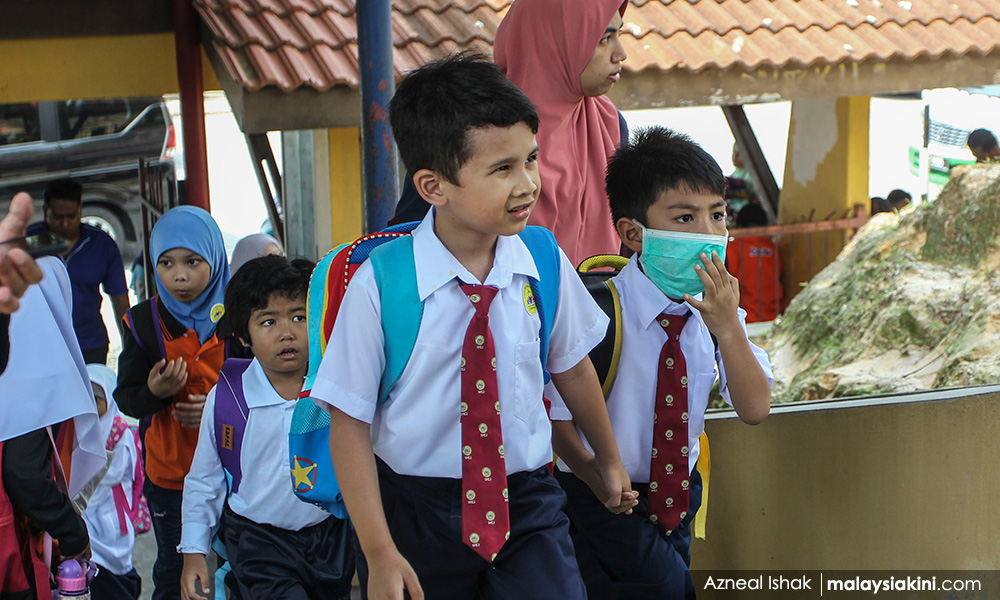
With the Covid-19 pandemic expected to last for a number of years there will be a need at some point to consider reopening our school and kindergartens.
Currently, children form a small proportion of those who have tested positive in the pandemic. Although children get infected with Covid-19 and transmit the disease, the majority do very well or remain asymptomatic; severe illness and death are rare.
Adolescents have a slightly higher risk of significant illness. The major worry for children is that they may transmit the virus to parents, grandparents and teachers who might have a more severe illness.
Recently however there has been a concern with some young children infected with Covid-19 presenting with a ‘Multisystem Inflammatory Syndrome in Children’ (MIS-C) (Kawasaki-like disease) with some fatality. This is an uncommon disease that usually affects very young children with a "vasculitis" (inflammation of blood vessels). The number of children with this inflammatory syndrome is still small. However, it suggests that some young children may be vulnerable to Covid-19, thus this emphasises the need to limit its spread in the community.
As we attempt to open schools and learn from the few countries that have done so, we must recognise that the key will be to try and create a bubble (a shield) in which students who go to school "live in" so as to minimise infection spread. This "bubble" also means that if one group has Covid-19 infection, only they are isolated and the rest of the school can probably continue.

We need to continue to maintain our focus on stopping Covid-19's spread by safe physical distancing, avoid touching faces, cough etiquette, mask/face shield wearing, preventing crowding, limiting physical contact and talking and keeping hands clean at all times as well as keeping all surfaces clean at all times.
The below guide (SOPs) aims to help offer ideas and initiatives that could be taken when we reopen our schools. Teachers need to work very closely with parents and students; parents and children can play an important role. Students should be involved and be provided with a clear understanding of the situation. Younger students and those with learning disabilities may require reinforced training with a focus on visual tools. Support between schools will also be critical. Only when communities support, help each other and share resources can we move forward in this crisis.
The guide covers the areas to consider and offers suggestions for improving Covid-19 prevention. It looks at many aspects that involve teachers, supporting staff, students and the environment. The SOP is written to take into consideration the busy national-type school where classrooms are full with a high student-to-teacher ratio (40 per class) and a two-session system (morning and afternoon sessions). Suggestions are made on how to reduce class sizes into 15-20 "bubbles" – these students should have colour-coded armbands to serve as a reminder not to mix with those who have a different colour.
There will be a need to use e-learning strategies to supplement limited school hours and maintain a daily learning environment. There are options offered as to whether students and teachers should wear masks or opt for face shields. Attention is also focused on the cramped teachers/staff room. Children who come from disadvantaged communities and who depend on school meals for their basic nutrition must not be forgotten.

Schools should consider a step-wise start-up of classes starting with older students to establish a routine before introducing the younger students. Students with special needs should be the last in the class start-up list as they need more time and consistent training to understand and adapt to the new routine. Teachers must model and supervise all safety measures to students.
The full "Covid-19 Prevention in Schools Guide" is available for download and use here.
Note that the information provided in this guideline does not take precedence over any guidelines from the Ministry of Education (MOE). The persons involved in writing these guidelines did so in their individual capacity and do not represent the organisations they work with.
Some of the changes suggested here may need to be implemented as long-term measures that outlive the Covid-19 pandemic. In particular, it is important to design better schools with more classroom space, better ventilation and a green environment. The learning environment should be transformed to make self-directed learning a reality.
Incorporating "universal design for learning" (UDL) is vital as this approach to teaching is inclusive and meets the needs of every student in a classroom. Greater use of and access to technology, especially for disadvantaged students, will also be useful.
DR AMAR-SINGH HSS is a consultant paediatrician while SHYIELATHY ARUMUGAM is a special education educator. - Mkini



No comments:
Post a Comment
Note: Only a member of this blog may post a comment.